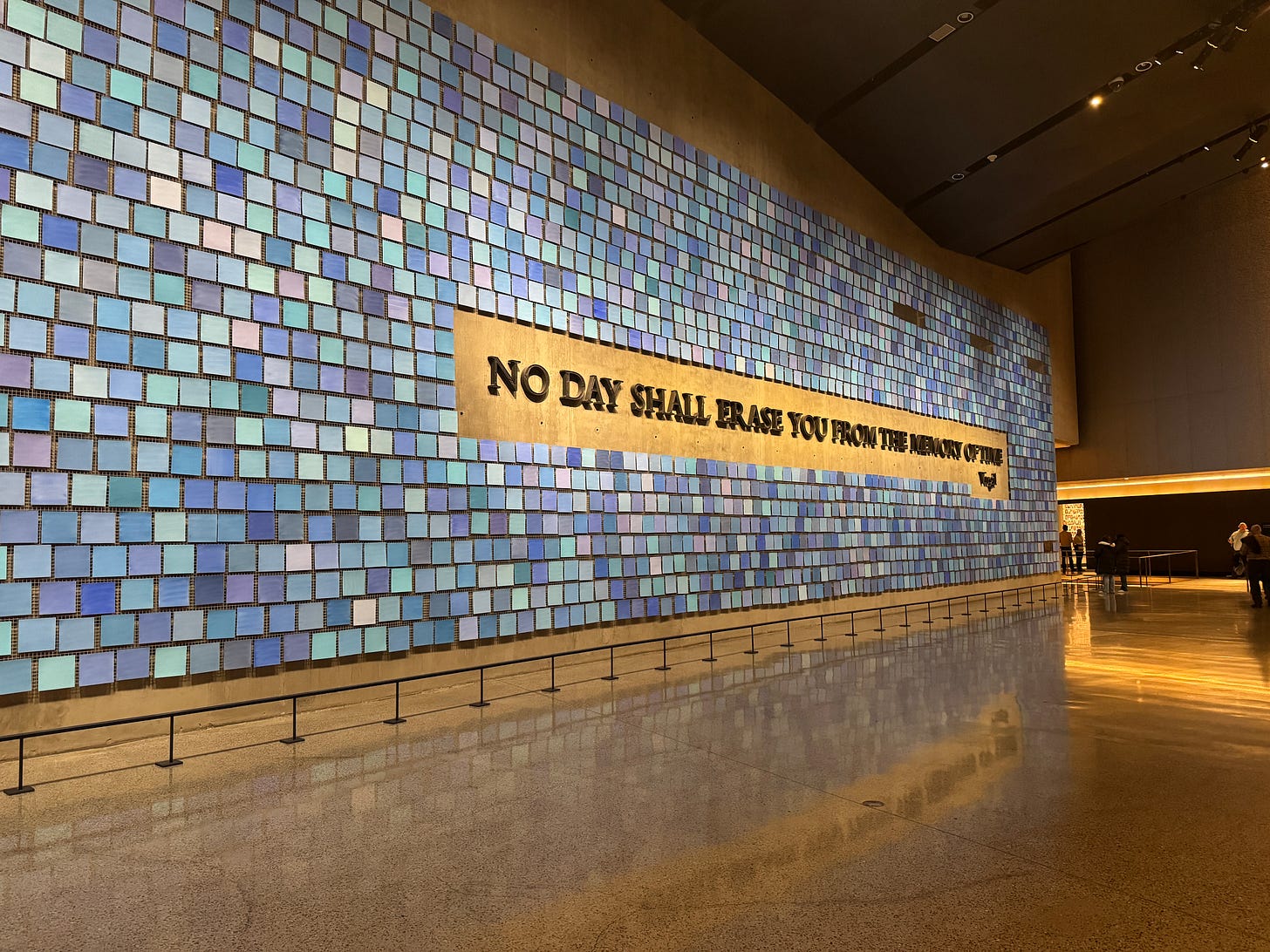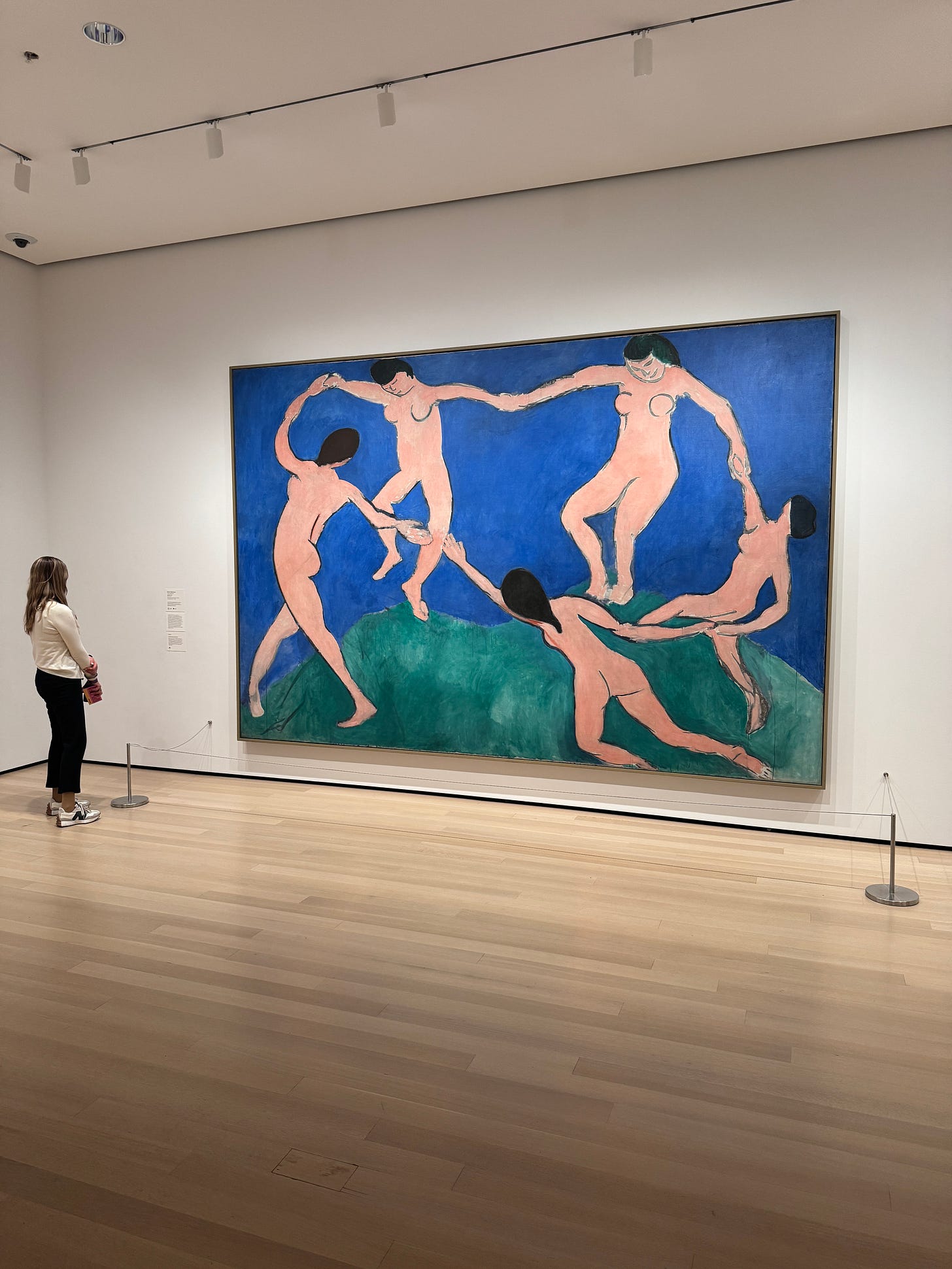How We Remember
On a recent trip to New York, I began thinking of how we grieve individual loss in the midst of mass tragedy.
I was in New York and the colour blue was following me everywhere.
Blue in the Museum of Modern Art, the backdrop to Matisse’s circling dancers, and then again on a tote bag in the gift shop emblazoned with the artist’s quote: ‘A certain blue enters your soul.’
A blue sky, the kind the city does so well: radiant in its freshness. Expansive, as if the endless doming embodied the ephemeral, exciting nature of possibility itself. Looking at this sky, imbibing it, felt almost illicit, like a child who drinks the ice-cold milk left in the fridge for the next morning’s cereal.
Blue, too, in the 9/11 Memorial & Museum. A blown-up photograph of the Twin Towers taken at 8.30am on 11th September 2001 by David Monderer hangs at the entrance. As he set up his tripod and unpacked his medium format camera that morning, Monderer noted the pristine brilliance of the sky - cloudless and stark against the waking city. Tall buildings sparkled, steel refracting sunlight, as he clicked down on the camera’s shutter and took one of the last pictures of the World Trade Center.
At 8.46am, a plane crashed into the North Tower.
At 9.03am, a plane crashed into the South Tower.
By 10.30am, both Towers had collapsed.
Two thousand nine hundred and seventy-seven people were killed, including the 19 Al-Qaeda hijackers who carried out the deadliest terrorist attack in history.
Our guide, Grace, took us round the exhibition space, pointing out the projected images of Missing posters made by people desperate to find their loved ones in the debris. She told us the Towers’ giant steel girders had been exposed to fire, accelerated by jet fuel. The steel had glowed red, as if a blacksmith were manipulating it, and then it had bent and buckled. Ten tonnes of it, snapped like matchsticks. The Towers collapsed in 12 seconds. Black clouds. White dust. The atmosphere suddenly toxic with tragedy.
How can one possibly memorialise a thing when the thing itself is beyond comprehension? How can we understand when the act of fully understanding such horror would compromise our own humanity? How do we communicate the unsayable? How do we commemorate both the epic scale and the individual resonance of this loss?







